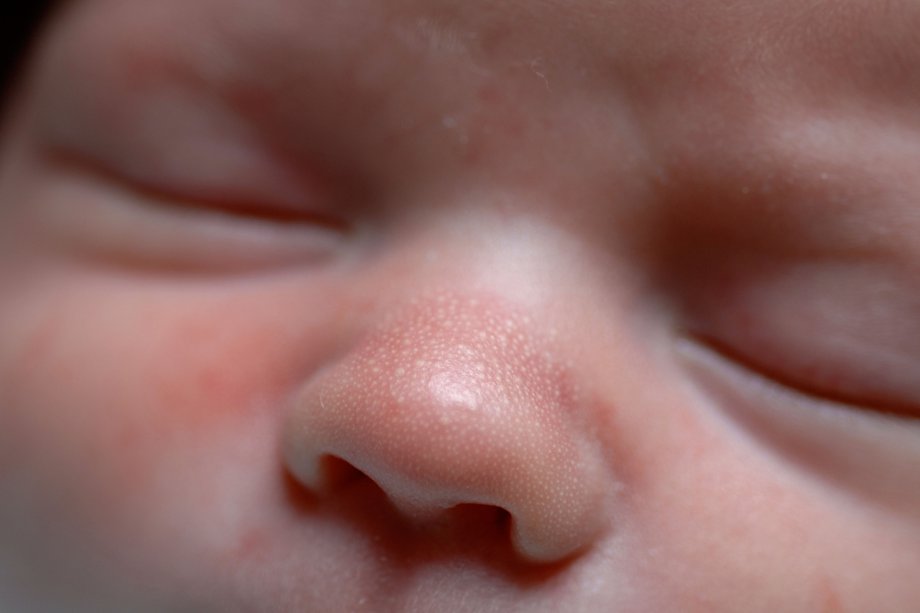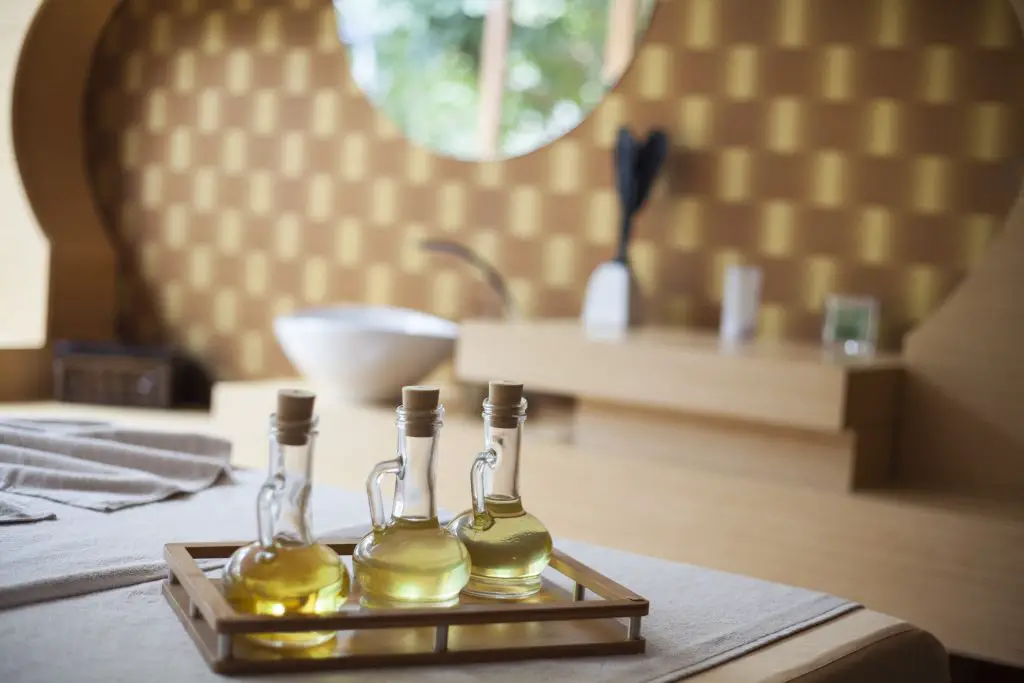What's On This Page
What is Milia?
No one wants bumps on their skin. Milia is a series of small bumps that form on your face. They tend to be widely spread out. A wide range of home remedies are recommended for treating this condition.
If you want to use essential oils for milia treatment, this article is for you. We will look at some essential oils that will fit the bill. As you will note, we tend to air towards going as natural as possible where treatment is concerned.
Due to their malignancy, there is no need to treat milia. For most people, it is important to treat them as they affect their appearance. It is worth looking into if it affects you and can be treated non-invasively.
Before we get to that, let us ensure you know what we are discussing.
The lack of inflammation usually differentiates milia from acne. Acne will come with inflammation of the skin. Milia (singular: milium) are small (generally ≤ 3 mm) white, benign, superficial keratinous cysts. [1]. They are one of, if not the most common benign skin tumours.
Milia can usually be found in 3 forms based on how it arises, primary, eruptive and skin damage. Primary milia are common in children, affecting about 1 in 2. The great part is that it is easily treated in babies. It is often manifested as a rash. Eruptive milia are most prevalent in women. It is often linked to sunbathing.
Skin damage milia are what it says on the tin. It comes as a result of your skin being damaged. The damage may be mechanical or part of a medical condition that you may have.
Mechanical damage is anything that breaks through the skin’s surface, causing a tear. Primary milia tend to be the least severe looking. If they result from trauma or chemical injury, they tend to look more severe.
Types of milia

If you want to differentiate them further, you can place them into these further categories:
- Primary milia
- Congenital
- Benign primary milia of children and adults
- Milia en plaque
- Nodular grouped milia
- Multiple eruptive milia
- Nevus depigmentosus with milia
- Genodermatosis associated
- Secondary milia
- Disease-associated
- Medication associated
- Trauma associated
[2]
Essential Oils for Milia
Tea Tree Essential Oil for Milia
Tea tree oil is the most highly regarded essential oil for treating milia. It works as a disinfectant due to its antibacterial properties.
How to use it
No matter how severe your condition is, it is important that you dab rather than drip or dip in the tea tree oil. There are several ways to do this right. The key thing is to use it in moderation.
- Dip a cotton bud into tea tree oil.
- Dip that cotton bud in a bowl of warm water.
- Gently apply this to the affected area.
- Start with once a day, and adjust based on the results you get.
- Do not use more than twice a day. Morning and evening use at a maximum.
Castor Oil
Castor oil has similar disinfectant abilities as tea tree oil. It will also bear results when used to treat milia. It is best used on primary milia. Where the skin is increasingly oily due to the milia, castor oil works to reduce the production of fluid in that region. People with acne commonly use it to treat oily skin.

How to use it
Castor oil is not as potent as tea tree oil. Apply it directly onto the affected area. As with tea tree oil, starting with a small area and a small dose is advisable.
Allow it time to be absorbed deeply into the skin. It is often applied in a mixture with olive oil and left overnight.
Aloe Vera
Aloe Vera contains polyphenols and other compounds that are antioxidants and anti-bacterial compounds. This means that it stops the growth of most human bacteria strains. It has many uses, some of which you might be aware of. Aloe vera is commonly used to treat wounds, especially burning ones.
How to use it
Apply aloe vera to the affected area in small doses. You may lightly rub or dab over the affected area with a cotton bud. Leave it overnight and wash the affected area in the morning.
Reapply on the clean skin and leave for the day. Wash it off in the evening.
Other Treatment
Treatment options are not limited to essential oils. There are other ways that you can go about it. The important thing is to understand what effect you are looking to have on the skin. You want to clean the affected area and allow it to heal.
Essential oils are key in removing any bacteria on the affected area. The cleaning can be done with other methods, such as a steam bath.
Steam bath
A steam bath is a common way of treating the skin. It doesn’t have to be affected by anything. It is advisable to have a steam bath now and again. What it does is clean your skin and open up your pores. Once your pores are open, it is easier for your skin cells to do the rest.
How to use it
There are steam baths or steam facial washes that you can buy online to make this process easier. These are not a MUST HAVE, as you can do this without them.
- Get very hot water and put it into a sink or large container.
- Place your face above the water and cover yourself with a large bathing towel.
- Allow the steam to circulate for about 15-20 minutes.
- Do this at the end of your day before going to bed. Repeat until the results begin to show.
Honey scrub
The honey facial scrub is another common method for treating milia. Raw honey is known to have the antibacterial and antioxidant properties that we spoke of. I am sure by now you understand what we are doing.
How to use it
- You want to put a small amount of honey on your palm and gently rub it onto the affected area in a circular motion.
- Once the area is covered, leave the honey for about 20-30 minutes.
- Wash it off.
You are done!
Other oils and elements that you can use to the same effect are rose and cinnamon. With rose, you are looking to find products that contain it as a key ingredient. These may be in the form of facial washes, body creams and lotion. Get some rose petals if you want to take the DIY approach. Crush them and mix them with water. Rub the mixture onto your face and leave it for a while. You may leave them on there overnight
Just the usual version in your kitchen will do the job for cinnamon. Mix it with some warm water or olive oil. Gently rub it over the affected area. Leave it on for about 10 minutes or so. Wash it off.
Management
Milia will usually clear up on its own. Treatment is used to make it more bearable and to quicken the healing. Suppose you find that your skin is prone to this condition. Consider doing what we have outlined above regularly. It keeps your pores open, your skin clean and free of bacteria.
You can also use topical skin lotions with disinfectant properties, such as glycolic acid, retinol or salicylic acid. You can also use a common disinfectant such as Dettol to clean your skin. It has to be diluted. I am sure the label on the back of the bottle clearly directs how much water to use with the Dettol.
Perhaps more importantly, avoid exposing yourself to common risk factors. Ensuring you are well covered and not under direct sunlight for prolonged periods is one way of doing this. There is no excuse for not wearing a sun hat and applying sun cream. You would think this is a no-brainer.
Consider regular exfoliation as well. This keeps your pores open and free of dead skin cells.
Further Reading
If you want to understand this condition more in-depth, check out the links below.
https://www.sciencedirect.com/science/article/pii/S0190962208009249
Very informative. I would not recommend using most essential oils directly on to the skin without a carrier oil like say, castor oil.